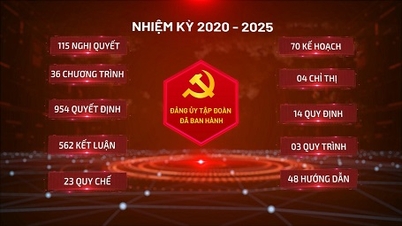TikTok discourages journalistic news
With its rapid growth and especially its large number of young users, TikTok was expected by the press to become a place to attract new readers, gain more traffic and increase revenue.
But the reality is that TikTok has shown that it's not a news-friendly platform: It strips away links that news publishers could use to pull users away from the app.
Additionally, TikTok does not label news or help users rate the reliability of journalistic news, and it offers few financial incentives to news organizations, although there are a few exceptions.

TikTok is not a place for readers to find news, nor for newsrooms to increase revenue or traffic.
Like other social media platforms, TikTok’s hostility to news is not surprising. Simply put, the more readers visit news sites, the less time they spend on social media. It’s true that some newsrooms have recently been praised for attracting younger readers on TikTok, but only when they produce or copy stories directly onto the platform, not by linking to them.
Researchers have found that recommendation algorithm systems like TikTok can effectively block people from news content.
So how does TikTok’s algorithm work? And how does news survive in the sea of content on TikTok? It’s hard to answer those questions clearly because TikTok doesn’t offer an API to researchers and the algorithmic experiences vary widely from user to user.
The Wasteland of News
But in a new study in the journal New Media & Society, researchers Nick Hagar (now a data scientist at the New York Times) and Nicholas Diakopoulos of Northwestern University took some creative steps to understand the role of news in TikTok’s algorithm.
And after a lot of complex and meticulous research, they realized that TikTok is a news wasteland! One of the findings of the study was that out of 6,568 news videos that they used bots to try to promote, only 6 could be classified as news. The authors concluded: “The For You Page algorithm picks up almost no news content, even when accounts are primed with positive news engagement signals.”
Notably, of the more than 700 hashtags trending on TikTok during the study period, only one — #breakingnews — was news-related, which was both unremarkable and contained a large amount of misinformation and comedy videos. The entertainment- and pop-culture-heavy hashtag contained a lot of content that looked like news but wasn’t.
In other words, if you want to see news on TikTok, you have to do your best to resist the algorithm’s influence, actively seeking it out rather than letting it suggest content. “The experience of avoiding news on TikTok happens almost by default as a matter of design,” Hagar and Diakopoulos write.
The authors contrasted their findings with a recent Pew study that found that one-third of adult TikTok users said they regularly get their news there. However, the discrepancy could be because users are actively seeking out news, or because they define news as anything they read and watch (including rumors, misinformation, comedy videos, etc.), rather than just news from newspapers and journalists.
Either way, the study concludes that many TikTok users appear to be using it for events happening outside of society, but TikTok's priorities are moving away from news reporting and focusing on entertainment or sensationalism, even "pointless" and "toxic."
Hoang Hai (according to Niemanlab)
Source




![[Photo] Prime Minister Pham Minh Chinh attends the event "Digital transformation of the banking industry by 2025"](https://vphoto.vietnam.vn/thumb/1200x675/vietnam/resource/IMAGE/2025/5/29/0e34cc7261d74e26b7f87cadff763eae)


![[Photo] Prime Minister Pham Minh Chinh receives leaders of Excelerate Energy Group](https://vphoto.vietnam.vn/thumb/1200x675/vietnam/resource/IMAGE/2025/5/29/c1fbe073230443d0a5aae0bc264d07fe)




























































































Comment (0)